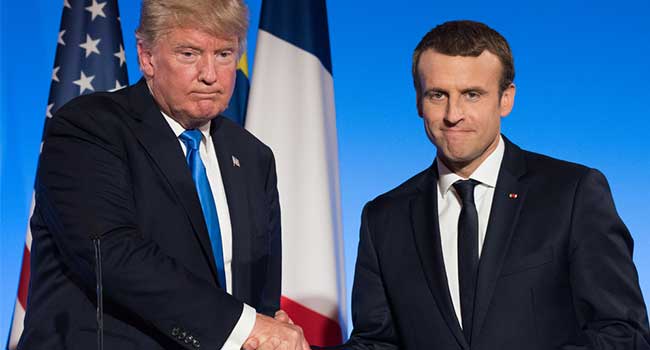
U.S. Doesn't Sign Macron's Cybersecurity Pact
A new cyberspace pact was signed by 51 other countries, 224 companies and 92 non-profits and advocacy groups.
- By Sydny Shepard
- Nov 14, 2018
A new agreement to get countries to agree on a set of international rules for cyberspace has been signed by 51 countries, 224 companies and 92 non-profit and advocacy groups. The United States, Russia and China are the most notable countries to not opt-in to the newly arranged pact by French President Emmanuel Macron.
The United States has not signed an agreement on rules and principles released at the Paris Peace Forum last week. Many critics believe that without the "heavy hitters" such as the United States, Russia and China, the pact is useless as the document is more of a charter and declaration of intent to sign in the future rather than a more comprehensive agreement.
"To be clear," Paul Bischoff, privacy advocate at Comparitech.com said, "countries who signed the pact did not agree to any specific rules, goals or penalties. Instead, they agreed to figure all that out together at a later date. The pact is mostly symbolic."
Bischoff believes the United States will resist joining in on this, or future pacts, as they have their own interests to worry about.
"The U.S. is home to the world's largest and most profitable tech and internet giants, many of which served as a medium for previous election hacking campaigns," Bischoff said. "This pact could seek to regulate them and after seeing [President Donald] Trump walk away from the Paris Climate accord, I'm not sure why anyone would be surprised at this result."
The Paris Call for Trust and Security in Cyberspace, as the pact has been named, proposes the following measures and steps.
- Prevent and recover from malicious cyber activities that threaten or cause significant, indiscriminate or systemic harm to individuals and critical infrastructure;
- Prevent activity that intentionally and substantially damages the general availability or of the public core of the Internet;
- Strengthen our capacity to prevent malign interference by foreign actors aimed at undermining electoral processes through malicious cyber activities;
- Prevent ICT-enabled theft of intellectual property, including trade secrets or other confidential information, with the intent of providing competitive advantages to companies or sector;
- Develop ways to prevent the proliferation of malicious ICT and practices intended to cause harm;
- Strengthen the security of digital processes and products throughout their lifecycle and supply chain;
- Support efforts to strengthen an advanced cyber hygiene for all actors;
- Take steps to prevent non-State actors, including the private sector, from hacking-back, for their own purposes or those of other non-State actors;
- Promote the widespread acceptance and implementation of international responsible behavior as well as confidence-building measures in cyberspace.
About the Author
Sydny Shepard is the Executive Editor of Campus Security & Life Safety.